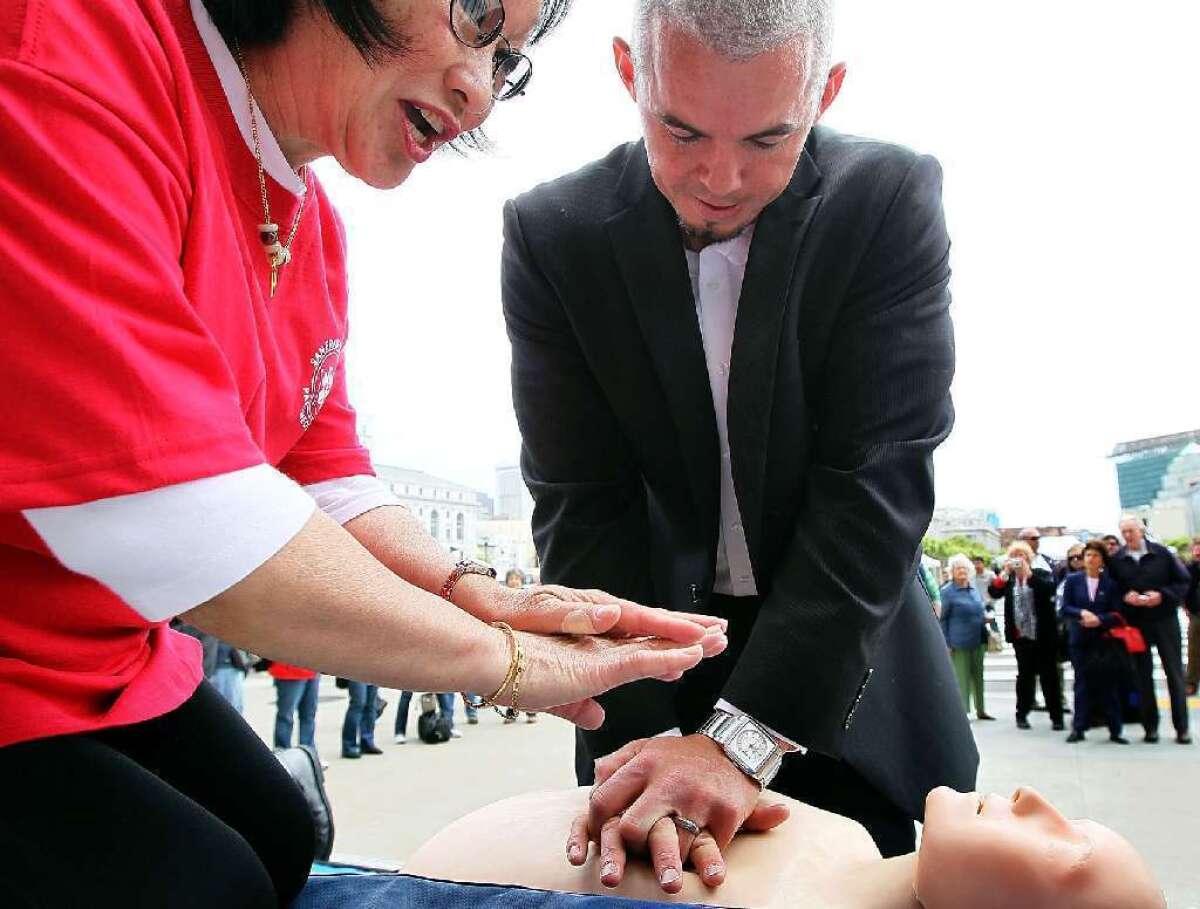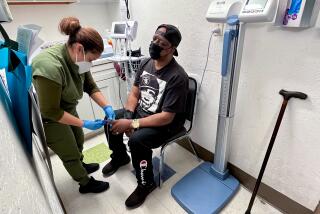Crowdsourcing CPR gets more help to cardiac arrest victims

People in need of CPR were more likely to get help from a bystander when researchers deployed a mobile phone alert system. Above, a man learns CPR.
If you go into cardiac arrest, getting help within the first few minutes can mean the difference between life and death. A new study shows that help can get to victims more quickly with a mobile-phone app that directs people who know CPR to medical emergencies near them.
The researchers call their app a “mobile-phone positioning system,” an homage to the network of satellites that make up the global positioning system, or GPS. The app uses the GPS function in mobile phones to find and contact bystanders trained in cardiopulmonary resuscitation who happen to be in the vicinity of a reported cardiac emergency. CPR-trained volunteers download the app if they are willing to get the alerts.
Dr. Leif Svensson, a cardiologist at the Center for Resuscitation Science at Karolinska Institutet in Stockholm, conceived of the research project 10 years ago during his morning commute. A 50-year-old woman’s heart stopped right outside the bus he was on.
“Nobody on the bus, including myself, saw this,” he said.
But when he arrived at the hospital for work, he saw the woman again, dead upon arrival in the emergency room.
“I was sitting approximately 10 to 15 feet from the place where she had her cardiac arrest,” Svensson recalled. If he had known of her condition earlier, he would have been able to help by performing CPR.
So Svensson recruited some colleagues and devised a system to “find your closest lifesaver,” as he put it. Whenever someone reported a case of cardiac arrest to emergency responders, all CPR-trained volunteers who were within about a third of a mile of the patient would receive a text message and a phone call to alert them to the emergency and the patient’s location.
To test how well it worked, Svensson and his team enlisted nearly 10,000 CPR-trained volunteers to participate in the study. The team activated the network and put out a call to volunteers after 306 cardiac arrests over a 20-month period. In those cases, a volunteer was able to initiate CPR 62% of the time.
For the sake of comparison, the researchers also used the network to locate volunteers after another 361 cardiac arrests, but the volunteers were not contacted. In those cases, a bystander performed CPR only 48% of the time, according to a report published in Thursday’s edition of the New England Journal of Medicine.
“It’s a really innovative idea,” said Dr. Clifton Callaway, an emergency medicine physician at the University of Pittsburgh and member of the American Heart Assn.’s Emergency Cardiovascular Care Committee. “Bystander CPR is one of the most powerful interventions to improve survival after cardiac arrest, and doing it quickly is really the key.”
It’s not just in Sweden. A few cities in the United States -- including Los Angeles, San Diego and Plano, Texas -- have recently implemented similar systems to activate a network of CPR-trained volunteers near cardiac arrest victims.
Of course, not every volunteer who receives a message responds to the call. In Sweden, four out of every five volunteers responded to the call for help, Svensson’s team reported.
The response rate might be lower in the United States, Callaway said. The baseline rate of bystander CPR is about 30% here, compared with about 50% in Sweden. If volunteers in the U.S. were notified of nearby emergencies, they might hesitate to rush into a neighborhood that is unfamiliar or feels unsafe, he said.
But having more CPR-trained volunteers signed up to receive emergency text messages may make it more likely one of them will appear by a victim’s side.
It could be helpful to set up a national database of willing responders, which volunteers could join after completing CPR training, Drs. Comilla Sasson and David Magid wrote in an editorial that accompanied Svensson’s study. Tens of millions of Americans have taken CPR training, and 23 states require CPR training as a high school graduation requirement, according to the American Heart Assn.
------------
FOR THE RECORD
2:49 p.m.: An earlier version of this story misstated the number of states that require CPR training in order to graduate from high school. It is 23, not 13.
------------
Another good way to recruit volunteers in the U.S. is to focus on people with medical training, like doctors, nurses, and emergency medical technicians, Callaway said.
“Medical personnel and emergency personnel could provide a lot of help for a lot of situations, and probably would — if we create the culture where we find out about it,” he said. “I hope it becomes even more widespread. It’s a very 21st-century solution to a problem that we’ve had for a while.”
For more science news, follow me on Twitter @sasha_hl and “like” Los Angeles Times Science & Health on Facebook.






